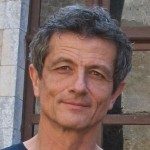Link to Pubmed [PMID] – 14711879
Development 2004 Feb;131(3):629-41
Interactions between Nodal/Activin and Fibroblast growth factor (Fgf) signalling pathways have long been thought to play an important role in mesoderm formation. However, the molecular and cellular processes underlying these interactions have remained elusive. Here, we address the epistatic relationships between Nodal and Fgf pathways during early embryogenesis in zebrafish. First, we find that Fgf signalling is required downstream of Nodal signals for inducing the Nodal co-factor One-eyed-pinhead (Oep). Thus, Fgf is likely to be involved in the amplification and propagation of Nodal signalling during early embryonic stages. This could account for the previously described ability of Fgf to render cells competent to respond to Nodal/Activin signals. In addition, overexpression data shows that Fgf8 and Fgf3 can take part in this process. Second, combining zygotic mutations in ace/fgf8 and oep disrupts mesoderm formation, a phenotype that is not produced by either mutation alone and is consistent with our model of an interdependence of Fgf8 and Nodal pathways through the genetic regulation of the Nodal co-factor Oep and the cell propagation of Nodal signalling. Moreover, mesodermal cell populations are affected differentially by double loss-of-function of Zoep;ace. Most of the dorsal mesoderm undergoes massive cell death by the end of gastrulation, in contrast to either single-mutant phenotype. However, some mesoderm cells are still able to undergo myogenic differentiation in the anterior trunk of Zoep;ace embryos, revealing a morphological transition at the level of somites 6-8. Further decreasing Oep levels by removing maternal oep products aggravates the mesodermal defects in double mutants by disrupting the fate of the entire mesoderm. Together, these results demonstrate synergy between oep and fgf8 that operates with regional differences and is involved in the induction, maintenance, movement and survival of mesodermal cell populations.

